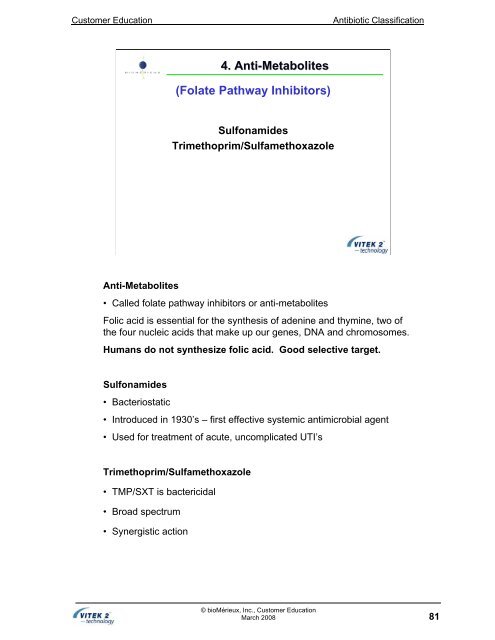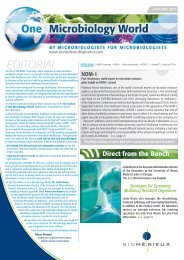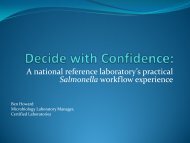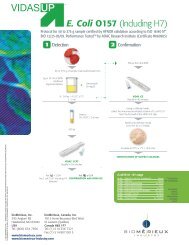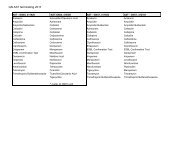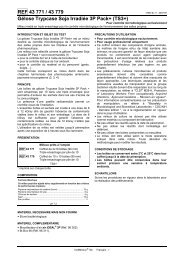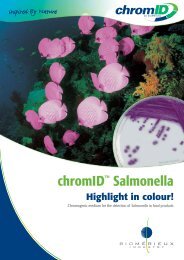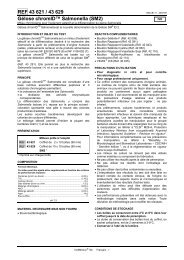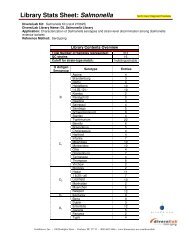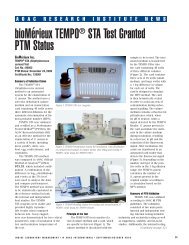Antibiotic Classification and Modes of Action - bioMerieux
Antibiotic Classification and Modes of Action - bioMerieux
Antibiotic Classification and Modes of Action - bioMerieux
You also want an ePaper? Increase the reach of your titles
YUMPU automatically turns print PDFs into web optimized ePapers that Google loves.
Customer Education <strong>Antibiotic</strong> <strong>Classification</strong><br />
Anti-Metabolites<br />
4. Anti-Metabolites<br />
Anti Metabolites<br />
(Folate Pathway Inhibitors)<br />
Sulfonamides<br />
Trimethoprim/Sulfamethoxazole<br />
• Called folate pathway inhibitors or anti-metabolites<br />
Folic acid is essential for the synthesis <strong>of</strong> adenine <strong>and</strong> thymine, two <strong>of</strong><br />
the four nucleic acids that make up our genes, DNA <strong>and</strong> chromosomes.<br />
Humans do not synthesize folic acid. Good selective target.<br />
Sulfonamides<br />
• Bacteriostatic<br />
• Introduced in 1930’s – first effective systemic antimicrobial agent<br />
• Used for treatment <strong>of</strong> acute, uncomplicated UTI’s<br />
Trimethoprim/Sulfamethoxazole<br />
• TMP/SXT is bactericidal<br />
• Broad spectrum<br />
• Synergistic action<br />
© bioMérieux, Inc., Customer Education<br />
March 2008<br />
81


